You probably know the GIF as the perfect vehicle for sharing memes and reactions. We believe the format can go further, that it has real power to capture science and explain research in short, digestible loops.
So kick off your week right with this GIF-able science. Enjoy and loop on.
Why Things Go Boom
On supporting science journalism
If you're enjoying this article, consider supporting our award-winning journalism by subscribing. By purchasing a subscription you are helping to ensure the future of impactful stories about the discoveries and ideas shaping our world today.
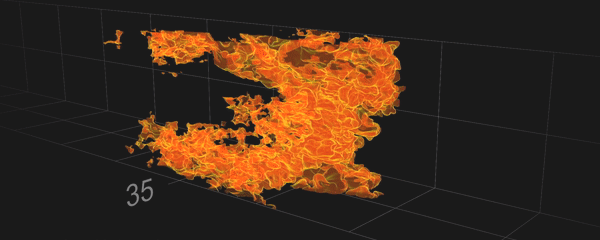
Why did those slo-mo flames just transform into a wriggling square of fruit leather? This is the metamorphosis of a simulated explosion as it spontaneously detonates. (Oh, and it’s not fruit leather—it’s a shock wave).
Explosions can spread in the form of detonation waves or deflagration waves. The former move like a dynamite blast: faster than sound, and pushing a shockwave outward. Deflagrations travel more like a burning fire: slower than sound, and eating up fuel as they go. Some explosions start with deflagration and rapidly accelerate to detonation, but researchers do not fully understand how this transition works.
Yet scientists from the University of Central Florida have now created a model that improves our understanding. Their work focused on small, dense stars called white dwarfs as they explode into supernovae, but the new model also applies to chemical explosions on Earth. It could help science improve detonation-based engines, or perhaps better understand major industrial accidents that may have involved spontaneous detonation. —KD
Beautiful Gut Buds
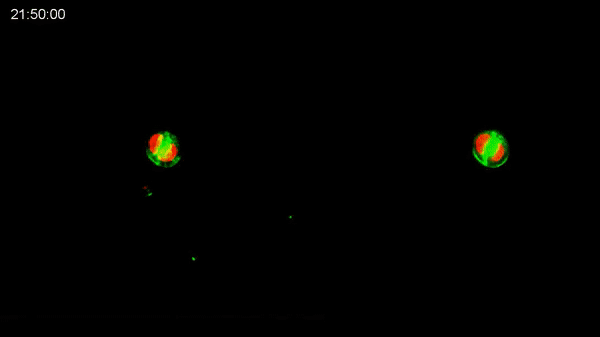
Credit: Prisca Liberali, Friedrich Miescher Institute for Biomedical Research, Basel
You probably ate something today—but you probably didn’t give your intestines a single thought (unless lunch didn’t agree with you). Every few days, the cells that line the intestinal wall die and are remade thanks to stem cells. You would be in trouble if they failed to do so.
This video shows a microcosm of the intestine itself, created by researchers in Switzerland. The timelapse shows two identical adult mouse stem cells developing into complicated, differentiated “mini-guts.” At the end of five days of growth, each cell has recreated the intestinal lining (the center of the organoids) and outgrowths that hold the stem cells, which allow the organoid to grow and ultimately renew itself in the future. These kinds of self-organizing cellular systems could help scientists learn how normal biological development works—and when it doesn’t, as in the case of cancer and disease. —JD
A Robot Finds Balance
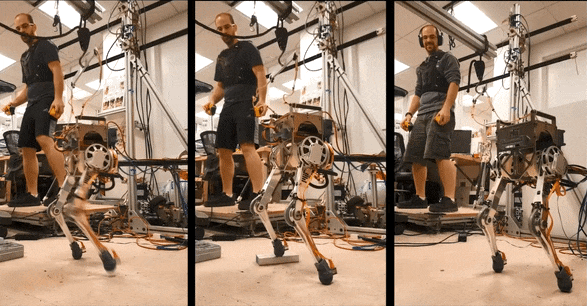
Firefighters are put in lethal danger every day that wildfires tear across California. Just last year, six firefighters perished in a Golden State inferno. But imagine if they could fight fires from the comfort of the station, with robotic analogs responding to their movements in the field and leaping into the flames on their behalf.
It may not seem like much yet, but this little pair of robot legs has taken us a step toward that dream. While two-legged robots have come far (some can even do gymnastics) they’re still not so good applying lots of force—say, to break down a door—without losing their balance. This human-operated robot, however, has excellent balance and responds quickly to the operator’s movements. Plus, it has two-way communication: if the robot is falling over, the operator will feel a tug on their vest and can readjust on the machine’s behalf. In the eyes of the M.I.T. researchers who created the robot (dubbed “Little HERMES”), a human-controlled robot has the best of both worlds; it combines the strength and resilience of a robot with the knowledge and adaptability of a human. —KD
Cranial Puzzle Pieces
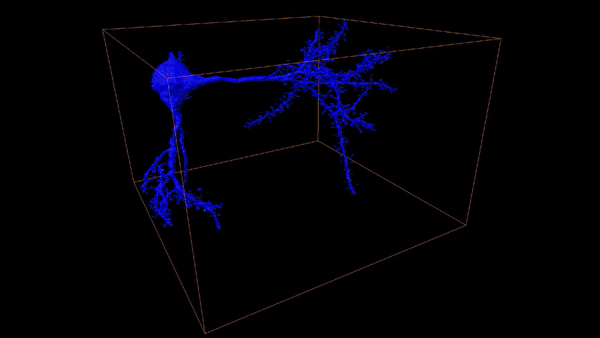
One of nature’s greatest puzzles is that pulpy mass of grey matter, the brain. So how do scientists untangle the 80-billion-plus intertwined pieces of that puzzle? Increasingly, machines are helping humans do that work.
You are looking at a small subsection of a reconstruction of the dense neuronal network in the brain of a young mouse. This little cube encases 89 individual neurons and measures four thousandths of an inch on each side. The complete reconstruction contains over 34,000 neuronal axons and took 3,981 human work hours and a heck of a lot of AI-based image processing to build.
The funny thing is, the amount of work required is a lot less than it used to be. A reconstruction of a comparable piece of mammalian cortex in 2013 took 25 times as long to complete. For this latest reconstruction, 87 human assistants used specialized visual editing software to complete any neurons that the artificial intelligence systems weren’t able to fully resolve. The hope is that by untangling the maddeningly complicated thickets of the brain, scientists might one day understand how evolution built consciousness into human and mouse alike. —JD
Robots Have Bad Days, Too
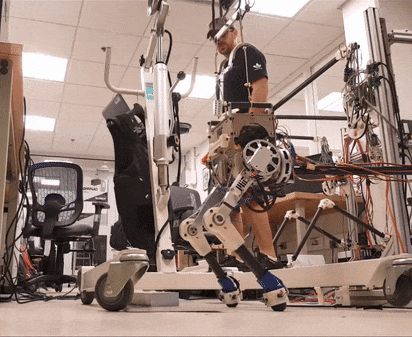
#RoboFails
